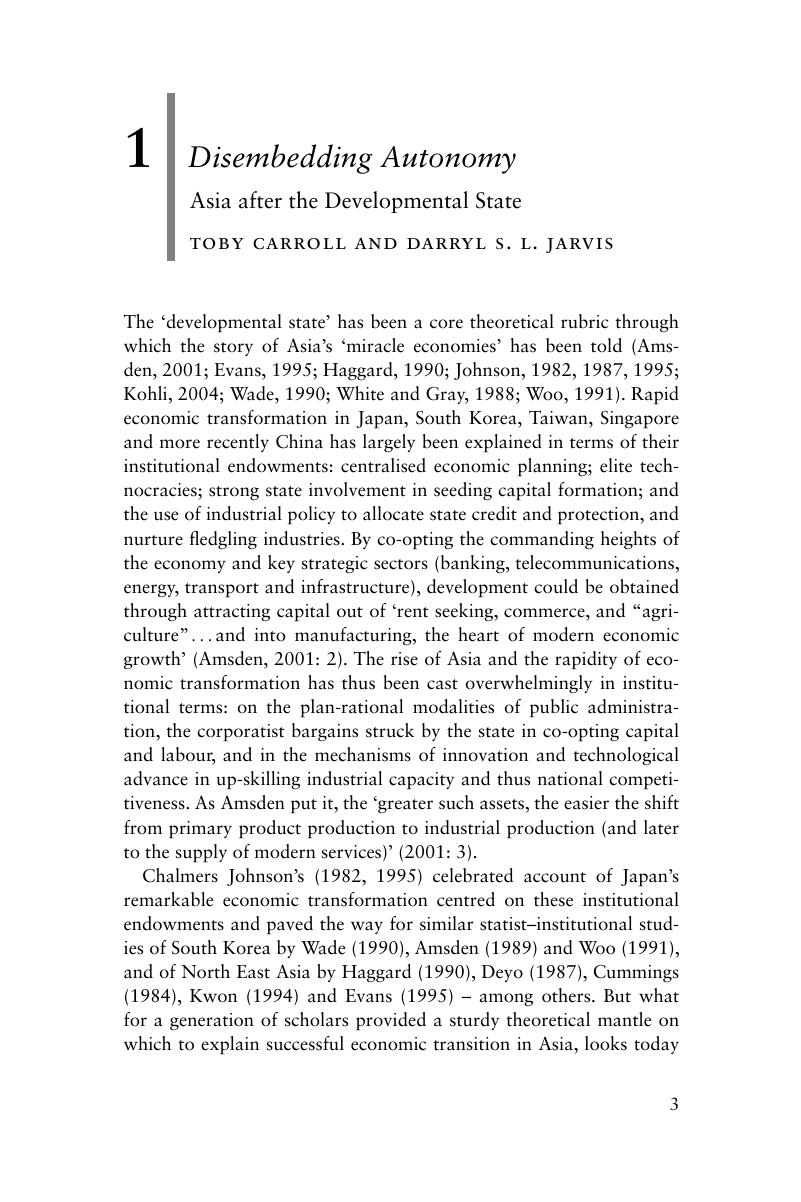Book contents
- Asia after the Developmental State
- Cambridge Studies in Comparative Public Policy
- Asia after the Developmental State
- Copyright page
- Dedication
- Contents
- Tables and Figures
- List of Contributors
- Preface
- Abbreviations
- Acknowledgements
- Introduction
- 1 Disembedding Autonomy
- Part I Conceptualising State Transformation in Asia
- Part II Cases of State Transformation in Contemporary Asia
- Index
- References
1 - Disembedding Autonomy
Asia after the Developmental State
from Introduction
Published online by Cambridge University Press: 06 October 2017
- Asia after the Developmental State
- Cambridge Studies in Comparative Public Policy
- Asia after the Developmental State
- Copyright page
- Dedication
- Contents
- Tables and Figures
- List of Contributors
- Preface
- Abbreviations
- Acknowledgements
- Introduction
- 1 Disembedding Autonomy
- Part I Conceptualising State Transformation in Asia
- Part II Cases of State Transformation in Contemporary Asia
- Index
- References
Summary

- Type
- Chapter
- Information
- Asia after the Developmental StateDisembedding Autonomy, pp. 3 - 48Publisher: Cambridge University PressPrint publication year: 2017



